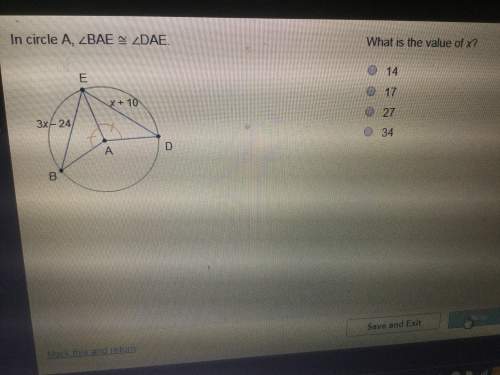5. Problem 8.06 (Expected Returns)
eBook Problem Walk-Through
Stocks A and B have...

Mathematics, 27.03.2020 22:19 jennifercastill3
5. Problem 8.06 (Expected Returns)
eBook Problem Walk-Through
Stocks A and B have the following probability distributions of expected future returns:
Probability A B
0.1 (13 %) (39 %)
0.2 3 0
0.4 12 20
0.2 19 27
0.1 36 38
Calculate the expected rate of return, , for Stock B ( = 11.50%.) Do not round intermediate calculations. Round your answer to two decimal places.
%
Calculate the standard deviation of expected returns, σA, for Stock A (σB = 20.63%.) Do not round intermediate calculations. Round your answer to two decimal places.
%
Now calculate the coefficient of variation for Stock B. Do not round intermediate calculations. Round your answer to two decimal places.
Is it possible that most investors might regard Stock B as being less risky than Stock A?
If Stock B is more highly correlated with the market than A, then it might have a lower beta than Stock A, and hence be less risky in a portfolio sense.
If Stock B is more highly correlated with the market than A, then it might have the same beta as Stock A, and hence be just as risky in a portfolio sense.
If Stock B is less highly correlated with the market than A, then it might have a lower beta than Stock A, and hence be less risky in a portfolio sense.
If Stock B is less highly correlated with the market than A, then it might have a higher beta than Stock A, and hence be more risky in a portfolio sense.
If Stock B is more highly correlated with the market than A, then it might have a higher beta than Stock A, and hence be less risky in a portfolio sense.
Assume the risk-free rate is 3.5%. What are the Sharpe ratios for Stocks A and B? Do not round intermediate calculations. Round your answers to four decimal places.
Stock A:
Stock B:
Are these calculations consistent with the information obtained from the coefficient of variation calculations in Part b?
In a stand-alone risk sense A is more risky than B. If Stock B is less highly correlated with the market than A, then it might have a lower beta than Stock A, and hence be less risky in a portfolio sense.
In a stand-alone risk sense A is more risky than B. If Stock B is less highly correlated with the market than A, then it might have a higher beta than Stock A, and hence be more risky in a portfolio sense.
In a stand-alone risk sense A is less risky than B. If Stock B is more highly correlated with the market than A, then it might have the same beta as Stock A, and hence be just as risky in a portfolio sense.
In a stand-alone risk sense A is less risky than B. If Stock B is less highly correlated with the market than A, then it might have a lower beta than Stock A, and hence be less risky in a portfolio sense.
In a stand-alone risk sense A is less risky than B. If Stock B is less highly correlated with the market than A, then it might have a higher beta than Stock A, and hence be more risky in a portfolio sense.

Answers: 2


Another question on Mathematics


Mathematics, 21.06.2019 21:10
The equation |pl = 2 represents the total number of points that can be earned or lost during one turn of a game. which best describes how many points can be earned or lost during one turn? o o -2 2 oor 2 -2 or 2 o
Answers: 1

Mathematics, 21.06.2019 23:00
Someone answer this asap for gabriella uses the current exchange rate to write the function, h(x), where x is the number of u.s. dollars and h(x) is the number of euros, the european union currency. she checks the rate and finds that h(100) = 7.5. which statement best describes what h(100) = 75 signifies? a. gabriella averages 7.5 u.s. dollars for every 100 euros. b. gabriella averages 100 u.s. dollars for every 25 euros. c. gabriella can exchange 75 u.s. dollars for 100 euros. d. gabriella can exchange 100 u.s. dollars for 75 euros.
Answers: 1

Mathematics, 22.06.2019 00:00
Add, subtract, multiply, or divide as indicated. list any restrictions for the variable(s) and simplify the answers when possible. 1) x-2 / x+5 + 3x / 2x-1 2) x+6 / x-6 - x^2 / x+6 3) x+9 / x-4 + x+2 / x^2-11x+28 4) x / x^2-64 + 11 / 2x^2+11x-40 5) 5 / x + 11 / x-3 - x-4 / x^2+2x-15
Answers: 1
You know the right answer?
Questions

Biology, 20.11.2019 20:31


Mathematics, 20.11.2019 20:31

Mathematics, 20.11.2019 20:31



English, 20.11.2019 20:31


History, 20.11.2019 20:31

English, 20.11.2019 20:31

Mathematics, 20.11.2019 20:31

Mathematics, 20.11.2019 20:31

English, 20.11.2019 20:31

Business, 20.11.2019 20:31

Mathematics, 20.11.2019 20:31

History, 20.11.2019 20:31

Mathematics, 20.11.2019 20:31

Mathematics, 20.11.2019 20:31






